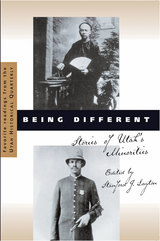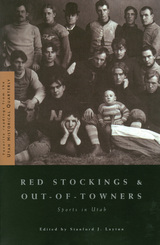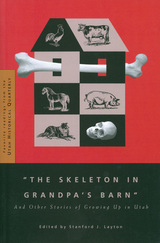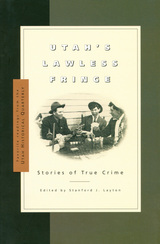
Ethnic studies can be full of surprises, pathos, and nostalgia, in Utah as elsewhere. In this anthology, fourteen gifted historians consider such issues as the collision of white settlers and Shoshones in northern Utah and the initial trouble with Salt Lake City residents when all-black troops were garrisoned at Forts Douglas and Duchesne.
The Mormon immigration was primarily of Yankee and British stock. Less advertised is the fact that it also included a sizeable number of Scandinavians who lent a distinctive, Old World flavor to the Sanpete area and by Polynesians who adapted their unique culture to the harsh realities of Skull Valley.
Peoples of other religions and nationalities followed with similarly colorful, energetic cultural contributions: the Italians and Greeks of Carbon and Emery Counties and the first Mexicans in and around Salt Lake City. There were short-lived colonizing efforts by Jewish settlers in central Utah and Japanese in Wasatch County.
In writing about and memorializing significant events surrounding immigrants’ lives and the day-to-day perseverance of pioneers of all nationalities, the fourteen contributors to this anthology offer fascinating details and unforgettable stories.

In team sports, the nearly forgotten Salt Lake Seagulls of 1946-47 competed against the best pro football teams in the West, while two baseball teams, the Salt Lake Deserets and their inner-city rival, the Red Stockings, played successfully in 1878-79 against the Cheyenne Reds, the Chicago White Stockings, the Denver Browns, the Nebraska Omahas, and the Rochester Hop Bitters.
Added to these, such pastimes as horse racing at the state fairgrounds, a winter ascent of Mt. Timpanogos in 1916, and angling at Fish Lake National Forest show the diversity and evolution of athletics in Utah. Like replaying the 1998 title game between the Utah Jazz and the Chicago Bulls, these assembled tales of perseverance, skill, exuberance, and heartbreak from long ago are equally thrilling.


So it went on the outskirts of Utah Territory. In this case it was the little town of Bluff where the Mormon bishop served for some ten years as de facto sheriff and his congregation as deputies. As elsewhere, law and order developed organically rather than by legislation.
In this anthology several aspects of the process are considered, including one of the worst manifestations of citizen action: vigilantism. Territorial Utah witnessed more lynchings than legal executions. Another citizen trait was an unexpected indifference to vice. In 1908 Salt Lake City had 148 registered prostitutes overseen by a madam who was recruited for the position by the mayor and city council. During Prohibition one of the largest distilleries in the West operated in a Salt Lake warehouse.
What is to be learned from this? The contributors to these fourteen articles leave moral considerations to the reader’s contemplation, while providing surprises along the way in an extremely engaging—dare we say arresting—read.
READERS
Browse our collection.
PUBLISHERS
See BiblioVault's publisher services.
STUDENT SERVICES
Files for college accessibility offices.
UChicago Accessibility Resources
home | accessibility | search | about | contact us
BiblioVault ® 2001 - 2024
The University of Chicago Press









